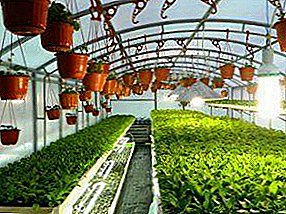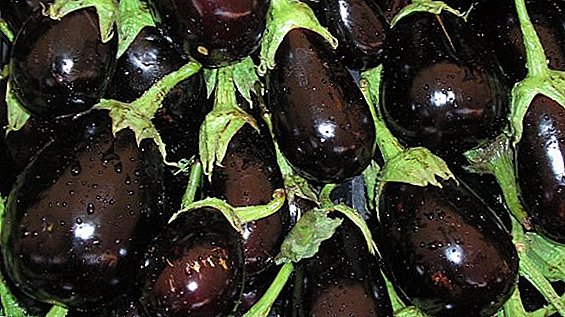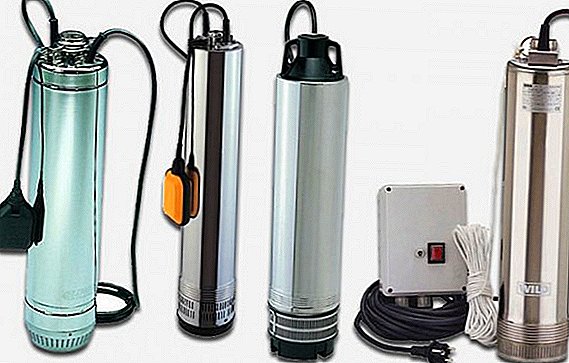 Submersible pumps are distinguished from non-submersible by the absence of noise and vibration, as well as higher productivity.
Submersible pumps are distinguished from non-submersible by the absence of noise and vibration, as well as higher productivity.
This option is faster, quieter and in large volumes will be able to supply you with water from a well of any depth.
Next, we will talk about which submersible pumps can be found on the market, what characteristics you should pay attention to and what the price depends on.
The main types of submersible pumps: which one is better?
Consider what types are submersible pumps, how they differ and which option is better to buy in a particular case.
Vibrating
They are simple in terms of use and maintenance of pumps, which are characterized by an increased service life. 
Principle of operation. Roughly speaking, the device works like our lungs, in which negative pressure forms at the moment of inhalation, as a result of which we draw air into ourselves. In the aggregate, this role is performed by the magnetic field and the core, on which it acts. The core triggers a rubber diaphragm that bends, creating negative pressure inside the device. After that, the liquid begins to flow freely into the pump, which passes it through pipes to the surface. To ensure regular current, special springs are installed inside, which return the diaphragm to its original place.
Pros:
- low price;
- durability;
- low maintenance cost.
Minuses:
- the dependence of water flow on the voltage in the network (even minimal differences lead to a significant decrease in work efficiency);
- raises sludge from the bottom as a result of creating vibrations;
- cannot be used for narrow wells.
Important! The maximum immersion depth is 50 m.
Screw
A device that can work even with highly polluted water. 
Principle of operation. Inside the device there is a large spiral screw that surrounds the internal thread. After starting the screw begins to rotate like a drill on a drill or a punch. As a result of the movement, the water begins to spiral upward, after which it is fed into the pipe.
Pros:
- fine dirt can not block the operation of the pump;
- rotating element has increased strength;
- water pressure does not depend on the speed of rotation of the screw.
Minuses:
- large dimensions of the device;
- low efficiency (65%);
- performance depends on the length of the screw, so for a significant increase in the incoming volumes of water it is necessary to change the device.
It will also be useful for you to learn how to choose a heat accumulator for a greenhouse, a lamp for indoor flowers, how to make a reel for a watering hose, how to choose a garden cart or cart, how to choose a watering timer, a sprinkler for watering, a seedling lamp, how to make an electric chopper branches with their own hands.
Centrifugal
The easiest in terms of implementation and the most productive version of the unit. Centrifugal pumps are installed not only to supply water, but also to create direct current in heating systems. 
Principle of operation. Inside the device, an engine is installed, to which blades are directly connected. After starting, the blades begin to move, resulting in a slight pressure, which leads to the suction of the bottom. After that, the water moves due to centrifugal force, coming up. For optimal power, install several screws with blades that accelerate the flow of water.
Pros:
- high efficiency (over 85%);
- can pump out water even from artesian wells;
- have small dimensions.
Minuses:
- dependence on constant voltage in the network;
- work efficiency depends on water level.
Vortex
A kind of centrifugal pump that has its strengths. 
Principle of operation. The work item is a wheel on which there are many small blades. The wheel is connected to the engine and placed in a cylindrical flask. At the same time the gap between the walls and the wheel is minimal. The bottom line is that even with small volumes of water entering through the device, a sufficiently large pressure is created that allows water to be removed to a great height.
Pros:
- high efficiency;
- the presence of a strong pressure, regardless of the volume of water;
- small dimensions;
- the ability to work at very large depths.
Minuses:
- any debris quickly disables the unit;
- the variety is not very popular, so in some regions it is quite problematic to acquire it.
Learn also how to choose a pumping station to give, how to make a water supply system from a well in a private house.
What to look for when choosing a pump: technical specifications
Consider the main technical characteristics that must be considered during the selection of the device. 
Water quality
Above, we mentioned that some types of pumps begin to break down due to polluted water. In this case, it is not about the fact that the device draws in silt and sand from the bottom, but about how much suspended matter is in the water column.
If you are sure that the water in your well throughout the year will be sufficiently clean, then you should give preference to centrifugal or vortex variations. However, if the liquid has a lot of suspensions, then it is better to purchase a screw immersion version.
Separately, it should be said about the vibration pumps. They are not the best choice even for clean water, because as a result of the work they create a vibration, because of which the bottom silts up.
Their installation is advisable only if the walls and bottom of the well are lined with masonry, which does not allow fine particles to crumble to the bottom. 
Did you know? The first pump was invented in Greece in the II-I century BC. er ... He had two cylinders, was equipped with valves and a lever for manual control. This unit was used to extinguish fires, resulting in the name "Fire Pump from Alexandria."
Power consumption
The amount of water supplied per hour directly depends on the power consumption - the more power, the more cubic meters. However, it is worth remembering that each type of device has its own efficiency, so a centrifugal pump will take less energy during operation and a screw one more, although their power will be the same.
It is worth paying attention to this feature, otherwise you will get an aggregate that will consume a lot of energy, but its productivity may not satisfy your needs. 
Remember that the fewer moving parts inside the device, the less electricity it will consume. For example, the most economical is a vibration pump, since nothing revolves inside it at all, but only creates a magnetic field that acts on the core.
And inside the screw version there is a large iron screw, the rotation of which takes a tremendous amount of electricity.
Maximum head
In fact, we are talking about how much height or distance the unit can supply water.
Each type has its own optimal and maximum pressure, that is, the distance over which the unit supplies water at a normal speed. 
The pressure depends not only on the power of the device, but also on the depth of the dive, as well as on the distance of the well from the house, so it is important to take all variables into account in order to find the right pump and power.
If you need to get the maximum pressure, as the well has a greater depth or is far from home, then you should prefer the vortex variant, which will provide maximum pressure.
It may also be useful for you to know how to build a cellar in the garage, how to make a Dutch stove, how to make a ladder or step-ladder, a summer shower to give with your own hands, how to make a sofa of pallets, a visor over the porch, how to build a bath concrete paths, how to make a stove-stove with his own hands, how to choose a septic tank to give.
If the well is shallow or is in close proximity to the house and water consumption points, then vibrational or centrifugal variations are used.
The maximum and optimum pressure of the device is always indicated in its description. It should be understood that this is not only about the depth of the well, but about the distance from the pump to the points of water consumption. 
It also takes into account the error in the form of pressure loss as a result of water movement, the water level in the well, the diameter and material of the pipe, the height of the building, and the length of pipes that are in vertical and horizontal position.
Bandwidth
In other words, it is the power of the device, the amount of fluid that it can pump per unit of time.
When choosing a pump, the question arises how much water is consumed per hour or day. Calculate this figure is difficult, so you have to calculate the average value, and then add the error.
The average consumption of the main points of water supply:
- kitchen - up to 500 l / h;
- wash basin - up to 60 l / h;
- shower - up to 500 l / h;
- toilet cistern - up to 50 l / h;
- bath or sauna - up to 1 thousand l / h;
- watering the garden / garden - 4 cubic meters of water per 1 square.

You can also build on the average rate of water consumption per day per person, which is 200 liters.
Important! Do not forget about the various devices that consume water. They should also be taken into account during calculations.It turns out that for a small apartment or house, in which one family of 3 lives, there is enough a pump, which will produce about 3-4 cubic meters of water during peak hours.
Immersion depth
The depth of immersion is directly related to the pressure of the water, so these two indicators should be taken into account simultaneously. It is also worth remembering that for deep wells, only vortex or centrifugal variations are used, which are intended for such purposes.
Most indicators of the submersible pump are interrelated, so you should not buy a unit with a large margin, otherwise it will affect the price. 
For example, if the device is intended for deep wells or boreholes, then it will have more power and consume a huge amount of energy, and also require a voltage of 380 volts.
This option will be able to raise water from a depth of more than 300 m, as well as provide a good head, but the price will be in the tens of thousands. For this reason, it is not necessary to take the pump with a reserve depth of immersion. You are unlikely to deepen your well, and the regular costs of electricity for the operation of the unit will result in a considerable amount.
Also consider that the pump must be located at a height of at least 150 cm from the bottom. As for deep wells, the unit should not be lowered to a depth of more than 10 m from the surface of the water.
Hydraulic tank capacity
The second name - hydroaccumulator, or expansion tank. It is necessary to maintain optimal pressure in the water supply system. 
It also protects against water hammer, provides a small amount of water when the pump is turned off for one reason or another, and also warns that the device is constantly turned on when a minimum amount of water is required.
The minimum volume of the expansion tank is approximately equal to 25 liters.. These tanks are used for low-power pumps, as well as with a small daily water consumption. The more needs and power of the device, the greater the volume of the hydraulic tank.
The best option to provide a small dwelling in which one family lives is a tank of 30-50 liters.
Many are concerned about the question of why you can not buy too large tanks. The fact is that if water stays in the tank for a long time and is not used, its quality begins to deteriorate. The same thing happens with water in closed barrels when oxygen is blocked. 
If you want to have a large tank of water in case of an unforeseen protracted power outage, then you can buy at your discretion, however, if there is no power failure, discard large volumes of the accumulator.
If you can not figure out how much tank you need, then it is better to consult with the seller. The specialist will be able, on the basis of information about a particular unit, to calculate the optimal volume of the accumulator as per the formula.
Remember that the volume of the tank only affects the availability of liquid and the frequency of switching on the pump. This element can be called a built-in barrel, in which water is always available, while at the same time it is impossible to refuse a hydroaccumulator.
Did you know? In 1911, in the UK, a pump was created that pushed water out of the pressure of gases released during the combustion of liquid fuel. In this case, the idea of such a design was put forward at the beginning of the XVIII century.

Additional functions
On expensive submersible units are installed different sensors that guarantee protection in unforeseen situations. This filling device allows you to forget about regular checks of work, as well as to use the pump in remote areas.
However, cheaper devices can not boast of the presence of such functions, so it is important to know what protection should be provided to the pump.
Dry running. This is the operation of the pump with insufficient water level or in its absence. Such work can disable the unit in a few hours. The reason is the overheating of the device, as well as the friction of the moving part. The water entering through the pump performs two functions at once: it cools and reduces friction, therefore, in its absence, powerful pumps can burn out.
To prevent dry running, a special protection is installed on the pump, which can cost as much as the pump itself. Such protection is necessary if, for whatever reason, you cannot regularly check the water level or its flow rate is done on the machine (automatic watering of the area). 
As a result, there are two options: buying a more expensive unit with a built-in system or buying protection separately.
Protection against dry running can be completed with special sensors or a conventional pear, the similarity of which is located in the toilet bowl. The second option is cheaper, but the first allows you to better control the water level by turning off the device in advance.
Overheat. It arises either because of the dry run, or because of power outages. In the second case, the protection against dry running will not correct the situation, as a result of which the device will fail. For this reason, many pumps are protected against voltage surges and overheating.
Such protection either normalizes the current or turns off the device.
You will hardly be able to buy overheating protection separately, so if this function is important to you, then you should initially choose a more multifunctional pump. 
If this is not possible, then worry about the voltage regulator, which is fed to the pump so that the device does not suffer.
Submersible pump for a well: we choose the manufacturer
Consider the main domestic and foreign manufacturers of submersible pumps. Tell you about the differences in price and quality.
Overseas
"Dab". Country - Italy.
These are advanced smart pumps with a variety of useful functions that ensure remote uninterrupted operation of the device. Differs from analogs in durability, quiet operation, and also does not require a hydraulic tank. Powerful enough device that has a good rating. 
"Omnigena". Country - Poland.
The units of this company do not differ in special functions, but they have a good, corrosion-resistant housing, which is made of brass and stainless steel. Pumps have good performance and are easy to maintain. 
"Grundfos". Country - Denmark.
Very high quality products that serve a long time. The units are easy to use, so there will be no problems in cleaning or replacing parts. With all this, the price of pumps is considerable, which should be considered. 
Domestic
"Jilex"
The products have the best price-performance ratio, which is why it gained high popularity. The devices are equipped with the necessary sensors that allows you to use them in remote areas. Installation is not complicated, the pumps operate almost silently, so they can be compared in quality with foreign devices. 
Important! There is no check valve in the pumps."Technoprobe"
The products of this company have the lowest price and, consequently, high popularity. It can be purchased in almost every corner of the country. Pumps do not have modern fullness and do not have a low noise level, but they are easy to maintain, and in the event of a breakdown, repairs will be very cheap. 
"Belamos"
Quite inexpensive products of good quality, which is used to raise water from a considerable depth. The pumps even operate in turbid water without regular cleaning. The price is fully consistent with the quality. 
Submersible pumps help to ensure a continuous supply of water to the house or to the site, while not overheating and no noise as much as non-submersible options. With proper selection of the pump you will not have problems during operation.
Feedback from network users















